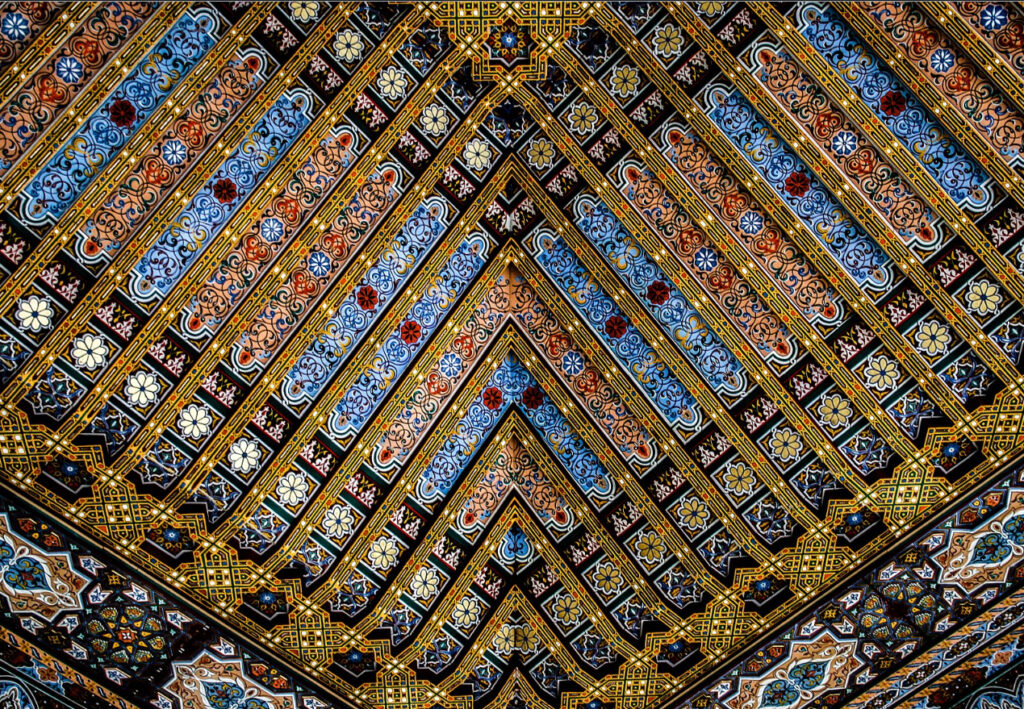Moroccan Riads: Architecture and Design as Cultural Expression

By: Rania Elshanawy / Arab America Contributing Writer
Moroccan riads, with their lush internal gardens and artistically decorated walls, are more than simply structures; they represent Moroccan culture and beauty. Tucked away in Morocco’s bustling medinas (ancient cities), these traditional residences are constructed not just for solitude, but also to give a haven of peace away from the frenetic outside world. A riad’s architecture is an intriguing combination of purpose, beauty, and cultural values, reflecting the Islamic focus on solitude and contemplation.
The term “riad” is derived from the Arabic word “ryad” which means garden, which is important to its design. A riad is often designed with all windows facing inward toward the center courtyard, which frequently includes a fountain and, on occasion, a small, beautiful garden. This inward emphasis is a physical representation of the cultural priority put on family and interior life, protecting inhabitants from the hectic streets while also encouraging a peaceful family atmosphere.
A riad is often two or more stories high, with high walls that increase seclusion and create a microclimate within. These walls not only insulate the people from the heat, but they also keep talks and the soft splash of the fountain contained inside its tranquil bounds. The plan is generally symmetrical, with rooms evenly dispersed around the courtyard, stressing balance and harmony, which are important ideals in Islamic art and architecture.
The design features of a riad reflect Moroccan craftspeople’s artisanal expertise and aesthetic sensitivities. Zellige (terracotta tile work), exquisite plaster carving, and painted wooden doors are frequent features of riads. The zellige, with its intricate geometric designs, not only decorates but also has a spiritual function since the patterns that repeat indefinitely represent the universe’s limitless essence. Plasterwork, which sometimes includes Arabic calligraphy and floral motifs, gives depth and texture to the walls, while painted ceilings and doors provide pops of color that contrast well with the generally austere exteriors.
The courtyard is the center of a riad, generally open to the sky, enabling sunlight to dapple the ground and plants, producing a dynamic dance of light and shadow throughout the day. This link to nature and the seasons is an essential component of riad life, making the passage of time and natural cycles part of the everyday experience.
Furthermore, riads are living examples of sustainable building, specifically constructed to adapt to the Moroccan environment. The strong walls and few external openings keep the interiors cool in the summer and warm in the winter. The center courtyard serves as a temperature regulator, with flora that helps to humidify and chill the air. Water features enhance this impact by providing a peaceful backdrop to daily living.
The reconstruction and preservation of riads has become a prominent cultural movement in Morocco, with many being turned into hotels and guest homes. This not only helps to conserve Morocco’s architectural legacy but also allows visitors from all over the world to experience the country’s distinct living culture. Staying in a riad provides an intimate view into the traditional Moroccan way of life, where architecture is more than simply providing physical spaces; it is also about creating places that reflect and maintain cultural values and aesthetics.
The riad symbolizes the Moroccan ethos by emphasizing family, solitude, and beauty, while also combining utility and aesthetic refinement. It is a setting where architecture and art merge to create not just a home, but also a refuge, making the riad a genuine cultural icon of Morocco.
Visit Arab America’s blog here!


